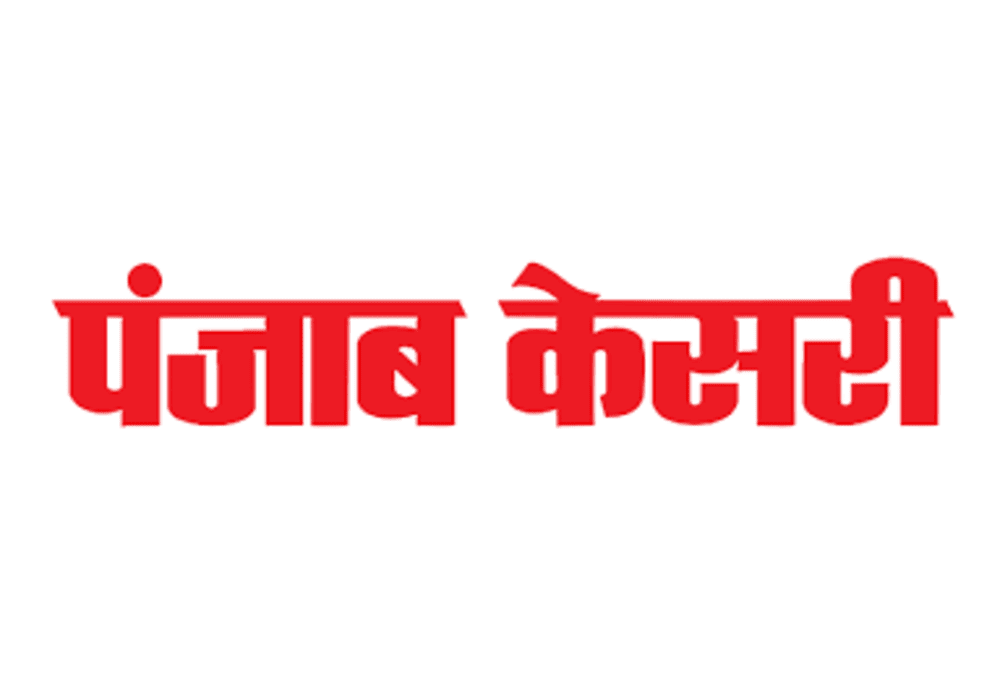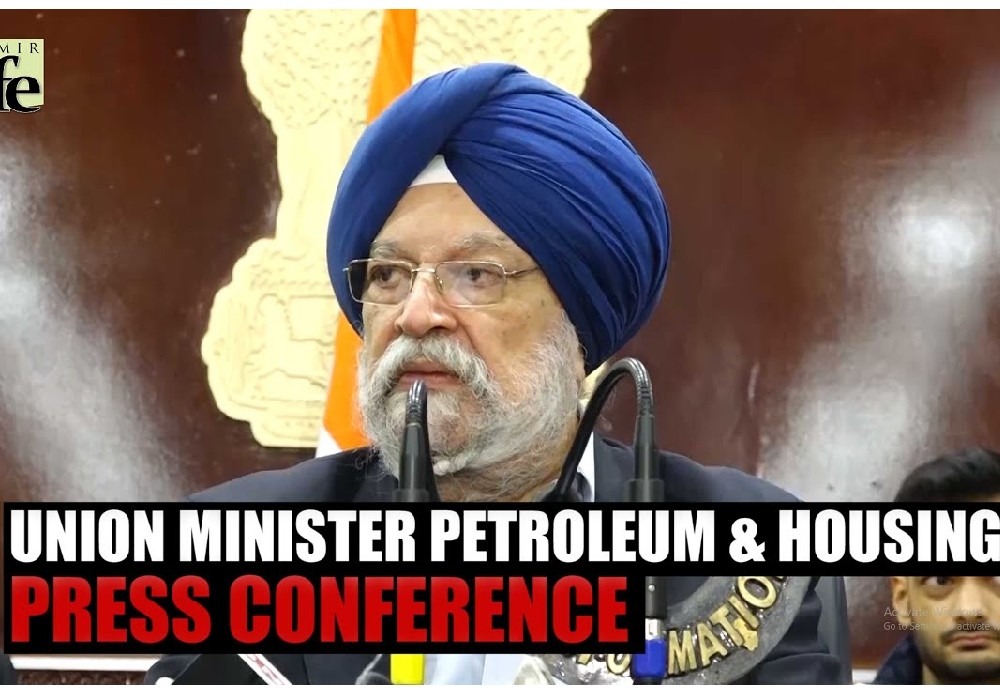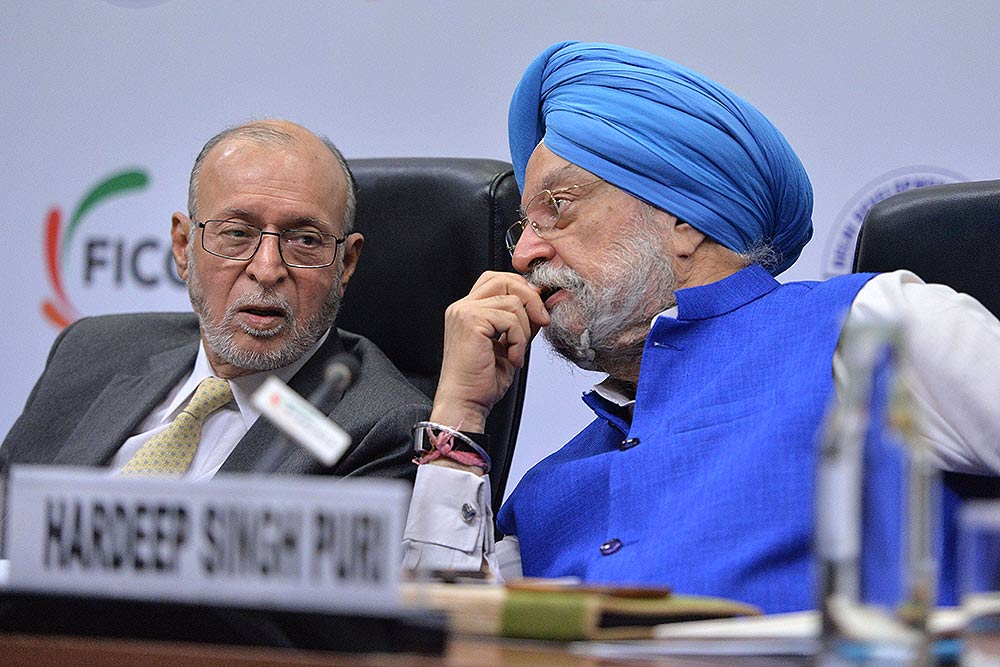DU at 100: The four colleges that started it all
St Stephen’s, Hindu, Zakir Husain Delhi College and Ramjas were not just four colleges that affiliated themselves with Delhi University – an institution they predate, and which became synonymous with them instead of being the other way round – they have come to embody Delhi’s geographical and social evolution as a city, its history as a cosmopolitan capital and its syncretic, yet complex, culture
When Delhi University was established in 1922, Delhi College already had a history of 97 years, St Stephen’s was 41 years old, Hindu College had existed for 23 years and Ramjas had started its journey five years ago.
Another common thread that binds these institutions is that they were established in the Walled City – the nerve centre of pre-Independence era Delhi, and home to the traditional business communities which had the resources and the drive to establish institutions for the next generation. The movement for India’s Independence also formed an integral part of the genesis of these colleges as it was the era of awakening – the time when India was not just claiming freedom from colonial rule but also developing the vision to prepare itself to handle and build an independent nation. Education, no wonder, was the focal point of this activity.
Evidently, besides Delhi, the three biggest universities of India were established around this time. Pandit Madan Mohan Malviya established Banaras Hindu University in 1916, Sir Syed founded Aligarh Muslim University in the Aligarh town of western Uttar Pradesh in 1920 and the Jamia Millia Islamia came up on the AMU campus (later shifted to Delhi) in 1935.
Madrasa Ghaziuddin (later Delhi College, now Zakir Husain Delhi College) was established at Ajmeri Gate by a commander of Mughal ruler Aurangzeb, and is recognised by historians as one of Delhi’s leading places of learning and the oldest continuing school in the city where college classes began in 1825.
Brooke Foss Wecott, a professor of Divinity at Cambridge and one of the founders of St Stephen’s, envisioned the college as an institution to teach western subjects to “students brought up in the culture of the east” to find a meeting point between East and West in the hope that the college would become another Alexandria on the banks of the Yamuna. The college was incubated in a building at Kinari Bazar’s Shish Mahal.
Krishna Dassji Gurwale, a prominent banker of the time, along with a few others got together and decided to start Hindu College out of a small residence in Chandni Chowk’s Kinari Bazar with 13 boys, in 1899, with the aim to provide “English, but nationalist” education.
An eminent jurist of the time, Rai Kedar Nath founded Ramjas in 1916 so that the common folk, children from poor and middle-class families, could get a fair chance at achieving higher education. It first started as a school in a small rented house in Chandni Chowk’s Kucha Natwan.
Today, these colleges are synonymous with DU as an institution, its academics, values and life on the campus.
St Stephen’s College
Just behind the famous Paranthe Wali Gali, moving towards Kinari Bazar one comes across lanes lined with havelis owned by Jain jewellery merchants. A rather nondescript lane called Katra Kushal Rai leads to the Sheesh Mahal, the original site where St Stephen’s College was founded by the Cambridge Mission to Delhi in 1881, before it was moved to Kashmere Gate a decade later.
The college was started by Cambridge Mission, dons from various colleges of Cambridge University, in 1881 with just five students and three teachers. It was initially linked with Calcutta University and later Panjab University as a constituent college, before becoming one of the three constituent colleges of Delhi University in 1922.
In 1881, students were taught logic and literature, psychology, history, mathematics and Persian. Father Monodeep Daniel, who chairs the Delhi Brotherhood Society, said the demand for a higher education institution was being raised by the citizens of Delhi as there was no operational college at that time, and the government college of Delhi had been shut down. “Cambridge mission was a group of Cambridge educated priests, and founder principal Samuel Scott Allnutt served as principal of both the school and the college. Once the number of students expanded and more space was needed, the college shifted to the Kashmere Gate building in 1891, which now serves as the Chief Election Officer’s office,” Fr Daniel said.
Author historian and an alumna Swapna Liddle says, “The Sheesh Mahal haveli in Chandni Chowk was the main city centre in the 1880s. The college moved to a second location only when they needed more space. The Kashmere Gate building designed by Swinton Jacob is a very unusual building of Indo-Saracenic architecture. It is a heritage of the city and there are not many such buildings.”
Here, the college started consolidating the elements that still define the institution’s identity. In 1896, inscriptions from the Gospel: Jesus said, “I am the light of the world; he who followeth me shall not walk in darkness but shall have the light of life”; and from the Mundaka Upanishad “Satyameve Jayate Nanritam” went up on the College Hall walls, and they remain present at the current location.
The college and some of its members also played a role in the Independence movement. The front lawns facing the current college building are named Andrews lawn after Revd. Charles Freer Andrews, also known as Deenbandhu Andrews, was instrumental in persuading Mahatma Gandhi to lead the freedom movement. Mahatma Gandhi and Kasturba Gandhi first visited the college on 13 April 1915. He also laid the foundation stone, consecrated by the Bishop of the Anglican church and the Imam of the Jama Masjid, for the current building at the university enclave in 1939 -- a site where the 54th Bengal Native Infantry was housed during the 1857 mutiny.
Satish Jacob, an author, former journalist and an alumnus who joined the college for BA in 1959, says, “It was the only college in the city, and it developed a reputation. Boys from some of the best schools from Dehradun and Darjeeling came to study here. While it was founded by the brotherhood, religion had no direct role and nothing was forced even though it is perhaps the only college with a morning assembly.”
The present-day Shakespeare Society (Shakesoc) was created in 1926, the oldest college society in India. The college has produced many creative personalities including Safdar Hashmi, Shekhar Kapoor, Roshan Seth, Kabir Bedi, among others. In his memoir, Stories I Must Tell, actor Kabir Bedi recalls that he was the secretary of the Shakespeare Society and shared a jokey friendship with senior advocate Kapil Sibal who was president of the college union. “At St Stephen’s, my production of Julius Caesar had Kapil Sibal as Caesar, while I played the lowly Casca. Kooler Talk, the irreverent student rag, said Caesar had been murdered twice. Once by Brutus, once by Kapil Sibal,” the memoir says. After 1950, with the departure of women students from college, the custom of inviting women from Miranda House started.
Women were first admitted to the college for the MA course in 1928-9. They were admitted to undergraduate courses in 1943 which was stopped in 1949, with the establishment of Miranda House. Women students were readmitted in 1975 and 1993-94.
“We were 45 girls out of a batch of around 1,100 students. Around 16 girls were from the same school, so we were familiar with each other and Delhi was also a much smaller place. A lot of young boys said that they did not want the college to become a co-ed institution arguing that it will ruin the culture, but it was only a laddish kind of awkwardness as everyone came from single-sex schools,” recalls Supriya Guha, an alumna who was part of the first batch of female students in 1975.
Hindu College
In 1908, another college moved to Kashmere Gate, besides St Stephen’s, in a premises once owned by Colonel James Skinner of the East India Company, from its roots in Kinari Bazar in the Walled City. This was Hindu College.
The institution was founded by Krishna Dassji Gurwale, a prominent banker of the time, along with a few others, to impart “English, but nationalistic” education to Hindus, some of whom were reluctant to join St Stephen’s since it was established by Christians.
The college was registered under the Joint Stock Company Act on June 6 in 1901, according to A People’s Movement, a book by Kavita Sharma, the first woman principal of the college.
The college hostel hosted several revolutionaries, including Chandrashekhar Azad, thanks to then hostel warden and professor NK Nigam. “Professor Nigam, a freedom fighter, completed his MA from the college, and later joined it as a lecturer. As the hostel warden, Nigam provided shelter to Azad and his associates. Nigam was arrested on 4 December 1930,” Sharma writes in her book.
Ravi Burman, 65, president of the Old Students Association, who studied history between 1972 to 1975, and started the famous college festival Mecca, says he had the best time living in the hostel. Speaking about the Hindu-Stephen’s rivalry, he says, “We had a very vibrant life in the college and the hostel. Unlike Stephen’s, we could indulge in a lot of hobbies and activities. We had 32 societies even then. And I still remember how the annual cricket match between Hindu and Stephen’s was a three-day party.”
The college also has its own parliament, a tradition that is going on since 1920s. The mock-House has an elected prime minister and also a leader of opposition. Eminent personalities such as Annie Besant and Mohd Ali Jinnah were “honorary members” of this parliament.
Sharma says when late former Prime Minister Atal Bihari Vajpayee visited the college for an address, he joked how there were two PMs on the stage that day. The college parliament launched the likes of Rajya Sabha MP Subramanian Swamy,e and others. “It still happens. It’s an event where all college societies have to present their budget for the year. Cabinet ministers are selected by the elected PM,” she says.
Ramjas College
Eminent jurist Rai Kedar Nath founded Ramjas as a school to ensure that the “common folk” have a chance at higher education. In 1916, Kedar Nath started the school from a small rented house in Chandni Chowk’s Kucha Natwan. However, by 1917, he decided to lay down the foundation of a full-fledged college, establishing it in Daryaganj, where currently, Ramjas School Number 1 and the Ramjas Foundation’s office stand. The foundation to this day runs the Ramjas College along with 16 Ramjas schools. The college was named by Rai Kedar Nath after his father Lala Ramjas Mal.
In 1924, the Darya Ganj site was used to create an intermediate college, with the original college then shifting to Anand Parbat, known as Kala Pahad at the time. The location was significant in many ways, with the Sarai Rohilla railway station barely a kilometre away. It linked the Walled City with the college and also facilitated students from far-off places such as Alwar, Rewari, Jhajjar and Pataudi.
From the time the civil disobedience movement began, Ramjas students and teachers were often found to be at the forefront of all agitations that took place in Delhi. “There are several files in the records of Delhi University in which letters from the police department are available in connection with the involvement of its students from the freedom movement,” says Rahul Jain, part of the helpdesk committee at the college.
The college eventually shifted to its present building in the year 1951, with Dr Rajendra Prasad, the first President of India, inaugurating the current campus on January 17, 1951.
On February 12, 1959, American civil rights leader Martin Luther King Jr visited Ramjas College and delivered a lecture and Nobel Prize winner scientist Marie Curie visited twice in the 1930s, college officials say.
Chaudhary Brahm Prakash, the first chief minister of Delhi, was among the alumni. Former Prime Minister Vajpayee also used to live on the college campus for several years, officials say.
Zakir Husain Delhi College
Mirza Ghalib could have taught Persian, if his ego did not force him to return from the gates of Madrasa Ghaziuddin in old Delhi’s Ajmeri Gate area, according to popular anecdotes about the madrasa that later grew up to become the Anglo Arabic School and Delhi College – one of the oldest educational institutions in the capital.
Historian Ebba Koch writes that the madrasa was founded by Ghaziu’d-Din Khan, a commander under the reign of Mughal emperor Aurangzeb, at the end of the seventeenth or the beginning of the eighteenth century. Koch identifies the madrasa as one of Delhi’s leading places of learning and the oldest continuing school in the city where college classes began in 1825.
As per the Delhi gazetteer, subjects such as history, geography, mathematics along with science and natural philosophy were taught at the college in 1825.
In 1857, the college ceased operations as it was marred by violence in the aftermath of the first war of Independence. The principal, headmaster, master, and a Persian teacher at the college were shot dead on charges of taking part in the mutiny. The college was revived nearly two decades later in 1872 in a new temporary campus at Kashmiri Gate before it was moved back to its original location. Later in 1925, the college was affiliated with Delhi University.
“The renaissance in north India is linked to the Delhi college,” says Mohd Aslam Parvaiz, former principal, who attributed this awakening to the creation of the vernacular society of Delhi College. Established in 1843, the society translated books on mathematics and other science subjects to Urdu. Teachers such as Master Ravi Shankar and Maulavi Zakaullah translated more than 70 books into Urdu, which was then the lingua franca, he says. “Through the vernacular society, western sciences were introduced into the college. The work translated and produced here shaped scientific temperament and encouraged critical thinking,” says Parvaiz.
“The college had been renamed after Dr Zakir Hussain on Indira Gandhi’s insistence. Since the time the college’s name was changed from Delhi College, there was a current of resentment among those associated with the college. The name Delhi College has a historical legacy and we did not want the link with the past to break. We were able to re-incorporate Delhi in the name under the chairmanship of prime minister Dr Manmohan Singh in 2010,” says Parvaiz.
Riaz Umar joined Zakir Hussain Evening College in 1958 as a lecturer, the same year when evening colleges were initiated across the city. In 1992, Umar became the principal of the college. He recalls that while Delhi College had been allocated space within the university campus, the college did not shift due to demands from the location population that did not approve of the relocation. The space was later allocated to Daulat Ram College.
“The college used to offer all popular courses along with many language courses. This was the only college imparting education in English, Arabic, Sanskrit, Persian and Bengali languages in those days. It offered both pass and honour courses and saw students excelling across all fields,” says Umar, who counts Bhisham Sahni, professor Randhir Singh, Ali Sardar Zafri, Muhammad Qasim Nanautavi, Gopi Chand Narang, among faculty and distinguished alumni.

देश में एक करोड़ यात्री प्रतिदिन कर रहे हैं मेट्रो की सवारी: पुरी ..

Union Minister for Petroleum and Natural Gas and Housing and Urban Affairs, Hardeep Singh Puri addressing a press conference in ..

Joint Press Conference by Shri Hardeep Singh Puri & Dr Sudhanshu Trivedi at BJP HQ| LIVE | ISM MEDIA ..
(3).jpg)
"I wish a speedy recovery to former Prime Minister Dr Manmohan Singh Ji. God grant him good health," Puri wrote. ..